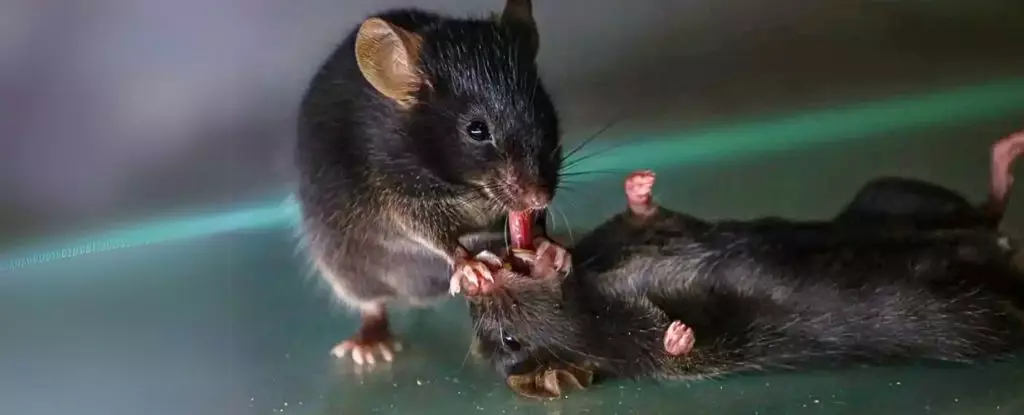The realm of animal behavior has long fascinated scientists, revealing intricate social structures and remarkable instincts across different species. A recent study focusing on mice has unwrapped a layer of complexity regarding our understanding of empathy and aid among animals. This research indicates that even in small mammals, the drive to assist others in distress may be deeply rooted in our shared evolutionary lineage. By examining the behaviors of mice attempting to revive their unconscious companions, researchers have opened a new avenue of inquiry into altruism in the animal kingdom.
In their study, scientists from the University of Southern California, under the guidance of neuroscientist Wenjian Sun, observed that when faced with an incapacitated companion, conscious mice displayed behaviors reminiscent of first aid attempts. Notably, these actions included a unique tongue-pulling technique designed to clear the airway of their unmoving peers. While it may lack the finesse of human medical intervention, the underlying intent and biological response suggest a remarkable level of sophistication in these seemingly simple creatures. The researchers noted brain activity in areas responsible for involuntary functions during these remarkable acts, hinting at an evolved response mechanism ingrained within the species.
Brain Mechanisms Behind Compassion
Delving into the neurological aspects, the study highlighted increased firing in brain regions associated with caregiving behaviors. Specifically, researchers noted heightened hormonal signals that support the mice’s rescue efforts. The activation of these brain centers during critical moments emphasizes the complexity of emotional responses and actions in non-human mammals. This phenomenon is not limited to mice; other larger mammals have also demonstrated similar rescue behaviors, showing that compassion might be more widespread in the animal kingdom than previously thought.
Interestingly, researchers also identified a specific neural circuit responsible for connecting the tongue-pulling action to heightened alertness in anesthetized mice. This connection underscores the importance of examining behavioral and neurological links to better understand how different species react to their peers’ distress.
Further investigations revealed intriguing insights regarding the cognitive processes involved in these rescue attempts. The pressure to help was notably stronger when the conscious mice were responding to familiar companions as opposed to strangers. This familiarity bias indicates a sophisticated level of social awareness. As University of Toledo neuroscientist James Burkett remarked, this suggests that the responses observed were not merely reflexive but rather informed by the identity of the individuals involved.
Experiments involved the conscious mice’s interaction with various types of unmoving companions—ranging from dead to unconscious, and even some that were simply sleeping. The results were telling: about half of the conscious mice attempted to assist their unresponsive peers by pulling their tongues. Many of these efforts resulted in the recovery of the incapacitated mice, underscoring the efficacy of these seemingly crude interventions.
The observations of resuscitative actions taken by mice provide compelling evidence for empathy and aid as a primitive, yet essential aspect of social behavior among mammals. The differentiation between the actions directed at sleeping versus dead mice highlights the animals’ awareness of the state of their companions—a level of cognitive understanding that may previously have been underestimated.
Moreover, the increased levels of oxytocin in caregiver mice further strengthen the argument for a biological basis of social bonding and caring behaviors. This hormone’s role in forming social connections proves that the instinct to help others goes beyond mere survival; it might be an evolutionary strategy aimed at fostering trust and cooperation within social groups.
The study of mice attempting to revive their unconscious peers unveils a rich tapestry of behaviors driven by compassion and social bonds. This research not only challenges preconceived notions about smaller mammals but also invites a broader discussion about the nature of altruism and empathy in the animal kingdom. As we continue to explore these intriguing behaviors, we gain clearer insights into the fundamental attributes that not only define mammals but also connect us across species, emphasizing a shared heritage built on compassion.


Leave a Reply